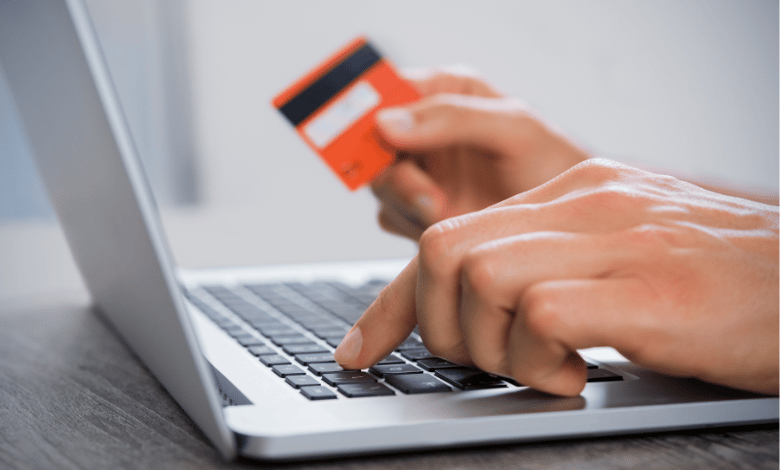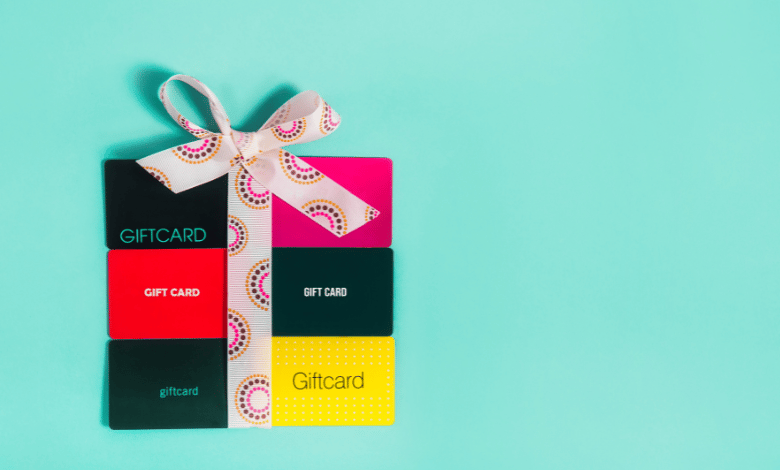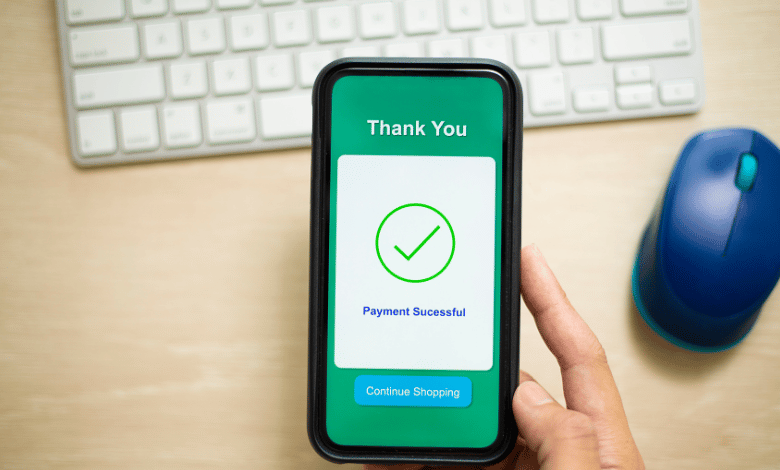As a result, with technological advancements worldwide, online payments are taking a rising trajectory. Interestingly, there are so many companies that are coming up offering diverse methods of online payments.
Every business is rushing to incorporate various online payment methods at least. This is superb! But how can you improve your checkout page to satisfy your customers, reduce the percentage of times they abandon their shopping carts, and drive more sales?
Offering consumers diverse payment methods is one of the most effective strategies to satisfy the growing demands placed on your business. So, let’s talk about the options for online payments, shall we? And how do they vary from country to country based on where you want to focus your marketing efforts?
In this article, you’ll learn about nine online shopping payment methods that are worth looking into. To support your efforts to expand into international markets, we provide some examples of payment methods that are common in various locations across the world.
What Are the 9 Best Methods of Payment Online?
The vast majority of today’s modern online payment services provide payment methods that are simple to employ, quick, and safe – this is the very minimum of what is required from payment providers.
Companies that do this eliminate customers’ need to submit their lengthy credit card data or other personal information. They instead facilitate a streamlined checkout procedure by storing customers’ preferred ways of payment and outsourcing the processing to a third party.
Below is the list of the nine best methods of payment online;
PayPal
PayPal is one of the most popular payment methods accessible today, and it has over 254 million users all over the globe.
PayPal is a corporation that processes payments for online retailers. The company is owned by eBay. Users can open a PayPal account and pay a charge for each cash transaction they make through their PayPal account.
Many customers using PayPal like the services offered due to ease of use, transaction processing speed, and security of their funds. There is no doubt that PayPal has grown to be one of the best methods of online payments across the world.
PayPal promises that clients who use its services to checkout convert at 82% greater rates than clients who use other payment alternatives. More than 17 million businesses utilize PayPal’s operations across the world.
Be mindful, however, that the restrictions and fees will change depending not just on the denomination being used but also on the amount being exchanged.
Amazon Pay
Another major competitor in the market for online payment systems is Amazon Pay.
Amazon Pay is an electronic money transfer service that works in a manner very similar to that of PayPal. It enables users to make online payments using their Amazon payment methods on websites not owned or operated by Amazon.
Amazon Pay allows for a more streamlined shopping experience by using the information already saved on the customer’s Amazon account to complete the purchase.
Online businesses can surely benefit from Amazon’s undeniable web-wide prominence, as most clients already have an Amazon account.
eBay Managed Payments
eBay Managed Payments is yet another alternative to conventional online payment processing.
Customers can enter their payment information and have it processed without needing to navigate to a third-party site and exit the marketplace digitally. This is made possible by eBay’s in-house payment processing technology.
If you are a retailer selling via eBay, you don’t have to receive payments through a separate site. eBay allows you to get your payments via the same platform more efficiently without creating an account on another payment platform.
In addition, your consumers can take advantage of a streamlined payment process conducted entirely through a single website. This process accommodates a variety of payment methods, such as credit and debit cards, Google Pay, Apple Pay, and even PayPal, if that is the method they choose.
Google Pay
Considering tens or perhaps hundreds of millions of Google users have already saved their credit card information to their Google accounts, the addition of Google Pay could provide an additional level of ease for a sizeable portion of your clients.
Trusted worldwide, Google Pay lets buyers quickly and easily check out third-party websites by letting them select a payment option from a list of remembered payment options in their Google account.
In addition to this, Google Pay allows your customers to save branded gift cards, loyalty cards, and offers, which helps you establish brand recognition and provides a buying experience that is both smooth and wholly conducted online. The use of Google Pay is entirely free for both you and your consumers.
Apple Pay
Did you know that in the United Kingdom alone, approximately half of all people who use smartphones possess an Apple iPhone?
Therefore, the popularity of Apple among many individuals across the globe makes its online payment procedure very common.
It eliminates the need for your consumers to enter their lengthy card details. Instead, it facilitates a payment procedure that can be completed with just one click, making it a convenient, safe, and speedier alternative to traditional payment methods like credit and debit cards.
As with Google Pay, the service does not charge fees to businesses or customers. Additionally, it allows users to verify their purchases using the Touch ID fingerprint sensor found on Apple iPhones.
Direct debit payments
Direct debit payments enable periodic, automatic payments; hence they are most frequently used for business-to-business (B2B) transactions.
Direct debits offer several benefits, the most significant of which is eliminating the need to wait for clients to settle delinquent bills because payment is processed practically immediately.
After the direct debit has been established, your customers won’t have to approve payments or make a mental note to pay manually; rather, the money will be deducted from their account on an ongoing basis in a manner that is completely hands-off for them. This makes the service an exceptionally convenient option for them.
This payment could work particularly well for recurring charges, such as quarterly retainers or premium service business models.

Bank transfers
In many cases, you will find that most of your customers have a bank account where they keep their money. However, customers still have reservations about the safety of handing over their credit card details while shopping online, even though that online shopping has reached an all-time high.
Customers do not have to provide you with their personal or financial information to complete a transaction using a bank transfer, which is the primary advantage of using this payment method.
Furthermore, the use of bank transfers to make payments through eCommerce is only expected to increase as a result of open banking initiatives such as PSD2 (Payment Services Directive 2), which is a piece of legislation that will permit non-banks, i.e., retail merchants, to undertake payments without the interference of traditional card brand networks.
Prepaid cards
Teenagers and online buyers who do not yet have a bank account frequently utilize prepaid cards instead of traditional payment methods.
Prepaid cards are a sort of debit card issued by a financial institution or credit card company and can be “loaded” with a specific amount of cash.
The amount deposited into the card serves as the basis for determining the card’s limit; after the card’s balance has been depleted, the card is rendered useless until additional money is added.
Because of this additional level of control, prepaid cards typically have an age restriction ranging from 14 to 16 years and do not necessitate a credit check owing to this restriction.
Most online gaming companies prefer this online payment method; for instance, a player’s virtual money can be saved on prepaid cards, and the player can then use these to make purchases within the game itself.
Gift cards
Gift cards are comparable to prepaid cards in that they hold a predetermined sum of money; however, unlike prepaid cards, gift cards are often sold by retailers and, more subsequently, by prominent credit card issuers like Visa Mastercard and American Express.
Although certain retail groups will enable the same gift card to be redeemed at other associated businesses, closed-loop cards are the most prevalent type of gift card. This designation refers to the fact that a single retailer can only use the card.
In contrast to prepaid cards, which may have their balance “reloaded” with new funds whenever needed, gift cards can no longer be used once their whole value has been deducted.
Gift cards can be useful for promoting your business and attracting new clients, particularly around important dates and events in the retail industry.

Digital currency
Digital currency has been evolving daily. The developments in the digital currency drawback to when Bitcoin was originally synonymous with unpredictability, risk, and illegality.
However, small organizations must still handle cryptocurrencies with diligence and accept these kinds of innovative online payments depending purely on the desires of their consumer base.
For instance, if you are seeking to connect with a younger audience and your target demographic is millennials since they are the generation most likely to invest in cryptocurrency, then providing a payment option in the form of a digital currency could assist you in doing so.
It is important to remember that compared to conventional currency, the worth of digital currency is subject to far more volatility because it is not linked to any real-world assets.
Buy now pay later
The providers of credit that do not charge interest are sometimes referred to using the phrase “buy now, pay later.”
Customers who choose not to pay for their purchases upfront can use platforms such as Afterpay and Klarna, which allow them to pay for their things later or spread out the purchase cost.
These interest-free services could be advantageous for online merchants since they eliminate one of the greatest obstacles to closing a sale – inadequate funds – allowing clients to spend money they do not yet possess.
However, most ‘buy now pay later suppliers will charge the store a fee for every transaction. Before moving forward with this alternate online payment option, it is essential to keep this fact in mind because it will affect your bottom line.
Cash on delivery
Cash on delivery is a payment method that enables customers to pay for their purchases with cash or a credit card in person, straight to the courier, when the products are delivered.
Customers in nations like India, Bangladesh, and Thailand, which rely heavily on cash transactions, favor the option of paying for their online purchases with cash on delivery (COD).
The assurance that your customers will receive the items they have paid for without running the risk of their money going missing or being wasted is one of the primary advantages of this type of payment.
In addition, the customer can inspect the merchandise for any signs of damage before handing over their cash, making it feasible for them to return the item without having to pay anything in the first place.
Consumers are not required to provide the retailer with any of their financial information to make a purchase online, which many appreciate because it eliminates the possibility of any online fraud.
However, you may incur additional expenses as a retailer if you provide a cash-on-delivery payment option because many delivery services assess a surcharge for using this payment method.
What Are the Popular Online Payment Methods Globally?
Since each nation is unique, it should be no surprise that individuals in each nation have a preference for a particular type of online payment method.
What you’re trying to attract as customers and how they want to complete their online purchases will significantly impact the kinds of payment methods you provide for them.
Here, we have described some of the most prominent online payment methods from various locations throughout the world, all of which you should consider when concentrating on contacting customers from a certain region of the world.
Europe
In Europe, alternative online payment methods such as mobile payments, prepaid cards, electronic wallets, and immediate financing have increased over the last few years.
However, the use of credit cards continues to be widespread across Europe; consequently, it is essential to provide customers with a diverse range of payment options.
-
Paying through bank cards like Mastercard, American Express, Visa, UnionPay, Maestro, and JCB.
-
Paying through eWallet such as PayPal, Google Pay, Amazon Pay, Apple Pay, Qiwi, Yandex, and Skrill.
-
Use of money transfer through iDEAL and Sofort.
-
Use of direct debit.
-
Use of cryptocurrency such as Bitcoin.
-
Paying through prepaid cards like SNAP and Paysafecard.
-
Buy now pay later.
North America
The eCommerce industry in North America is among the greatest and most sophisticated in the world, experiencing a growth rate that is disproportionately high at 45% per year. This presents a significant opportunity for you to develop your online business.
You will discover that credit cards are currently the most popular form of payment accepted in the United States. On the other hand, Americans are also at the vanguard of more modern payment systems, including mobile payments, digital currencies, and checkouts requiring only one click.
-
Paying through bank cards like Mastercard, American Express, JCB, Interac Online, and Visa.
-
Use eWallet like PayPal, Google Pay, Apply Pay, Android Pay, Neteller, and Samsung Pay.
-
Paying through money transfer such as Skrill.
-
Use of direct debit.
-
Use of cryptocurrency like Bitcoin.
-
Paying through prepaid cards such as Paysafecard and Openbucks.
-
Buy now pay later.

Asia
The people of Asia come from a wide variety of backgrounds, and as a result, they employ a wide variety of online payment methods. Asia is hosts over more than 4.5 billion people.
Compared to India, which has traditionally been a cash-based economy, China has the largest online retail industry in the world and is a pioneer in mobile commerce.
-
Paying with bank cards like UnionPay, Visa, Mastercard, RuPay, and JCB.
-
Using eWallet like WePay Chat, Paytm, AliPay, Apple Pay, GCash, Google Pay, PayPal, GrabPay, Mobikiwi, PayU Wallet, and Citrus Pay.
-
Paying through money transfers such as SMART Money.
-
Use of cryptocurrency like Bitcoin.
-
Buy now, pay later like LazyPay and Afterpay.
-
Paying with cash later, such as Konbini.
New Zealand and Australia
In Australia and New Zealand, the most common method for making online payments is still credit and debit card transactions. On the other hand, using alternative payment options such as e-wallets and real-time bank transfers is becoming increasingly widespread.
In addition to this, because their retail and tourism industries are thriving, Australia and New Zealand offer a fantastic opportunity for you to reach consumers worldwide.
-
Use of prepaid cards such as Paysafecard.
-
Paying through cryptocurrency like Bitcoin.
-
Paying with bank cards such as Visa, Discover, American Express, Mastercard, and JCB.
-
Use of money transfers like BPay and Poli.
-
Use eWallet like PayPal, Samsung Pay, Apple Pay, and Google Pay.
-
Buy now, pay later like zipPay, Openpay, Afterpay, and Klarna.
Conclusion
Are you looking for the best methods of payment online? Some of the methods you can consider include PayPal, eWallet, cryptocurrency, money transfers, etc.
Check More Of Our Content Down Below
Examples Of Content Marketing And Why Is It Important For Business?
How To Search For Keywords – [Like A Professional]
![Best Methods of Payment Online [Top 9]](https://www.entrepreneuriallions.com/wp-content/uploads/2022/09/עיצוב-ללא-שם-1.png)